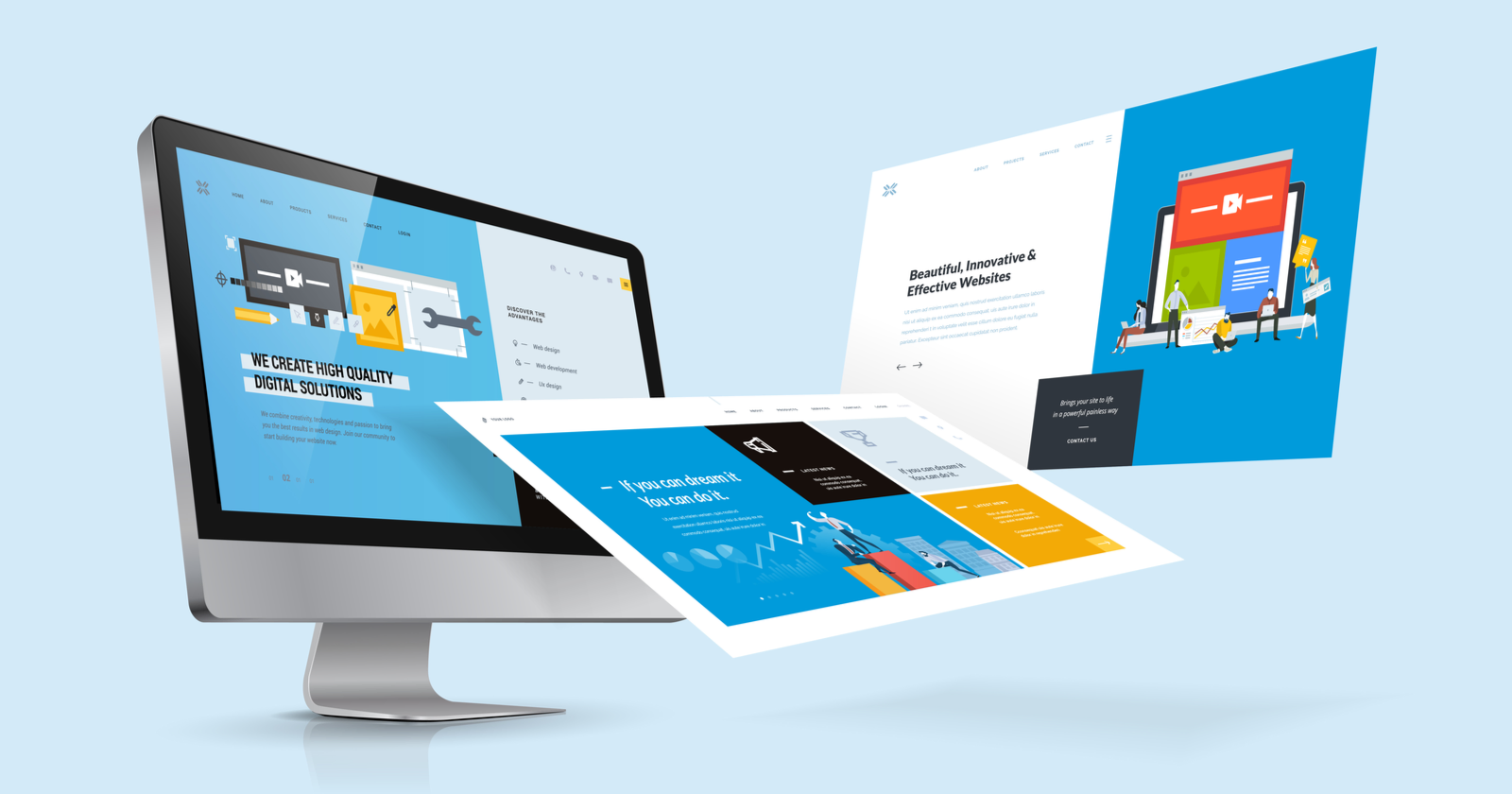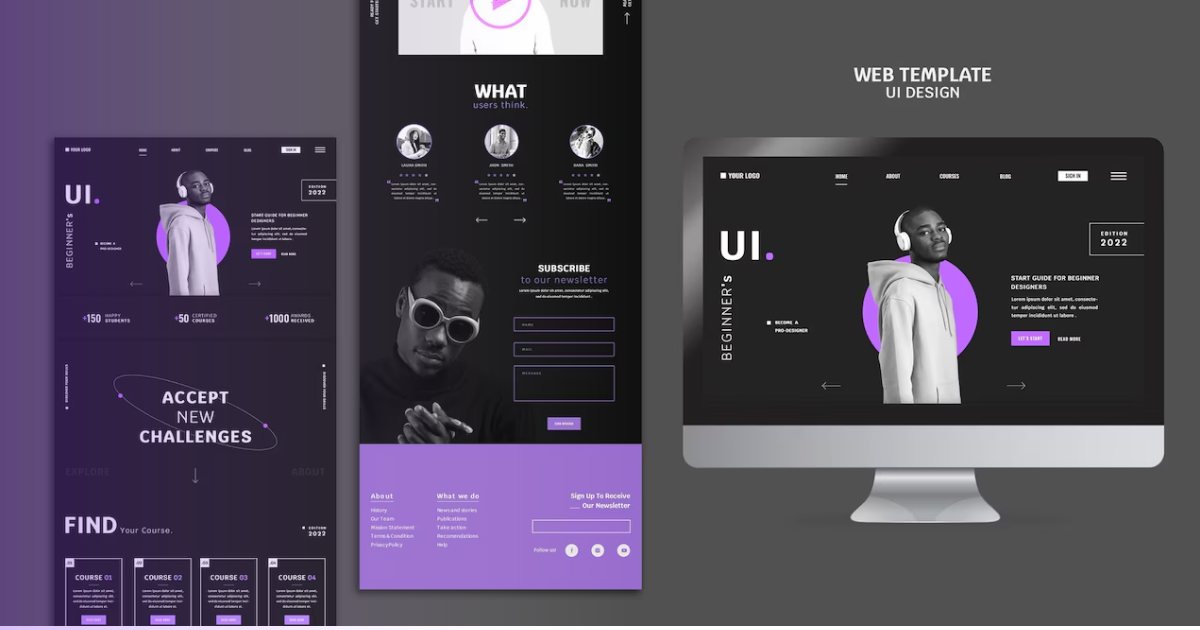The Finest Sorts Of Web Design to Boost Individual Experience and Engagement
In the ever-evolving landscape of electronic interaction, the effectiveness of Web design significantly affects user experience and involvement. Various style methods, such as minimal, receptive, and interactive formats, each offer special advantages that can provide to varied individual demands. Understanding which kinds of website design ideal serve these goals can be pivotal for services aiming to improve consumer complete satisfaction and retention. Nonetheless, the question stays: which layout elements genuinely reverberate with users and foster significant involvement? The exploration of these principles discloses essential insights that may redefine your strategy to website design.
Minimalist Web Layout
As electronic landscapes come to be significantly chaotic, minimal Web design has become an effective strategy to boosting customer experience. This style approach prioritizes simplicity, concentrating on crucial components while removing unneeded distractions. By making use of enough white room, uncomplicated navigating, and a restricted shade scheme, minimal style fosters quality and routes individual attention to key web content.
The core concept of minimalist Web style is to produce a seamless communication for individuals. By decreasing cognitive load, users can swiftly grasp information without really feeling bewildered. This direct method not just enhances functionality but additionally urges interaction, as site visitors are a lot more likely to discover a website that is easy and visually enticing to navigate.
In addition, minimalist layout commonly emphasizes typography and images, utilizing these components strategically to communicate messages effectively. This concentrate on essential elements can boost brand identity and develop a memorable individual experience. Basically, minimalist Web layout is not just a pattern; it is a thoughtful technique that recognizes the value of user-centered design. By removing additional components, designers can create a more appealing, reliable, and enjoyable Web experience for all individuals.
Receptive Web Layout
In today's varied electronic setting, receptive Web style has actually ended up being crucial for developing a smooth customer experience throughout a wide variety of tools. As individuals accessibility internet sites on smart devices, tablet computers, laptop computers, and desktop computers, the ability of a site to adapt its format and material to different display dimensions and resolutions is vital.
Responsive website design utilizes flexible grids, photos, and CSS media inquiries to make sure that Web content is offered efficiently, no matter the device used. This approach not just improves the aesthetic charm of a site but likewise substantially improves usability. Customers are a lot more likely to involve with a website that uses a constant experience, as it removes the irritation of having to focus or scroll excessively.
By adopting responsive style, businesses can enhance their presence and reach a wider target market. In summary, responsive Web layout is a fundamental method that boosts customer experience, engagement, and overall contentment.
Interactive Web Style
Responsive website design prepares for improving customer experience, yet interactive website design takes this a step further by engaging users in a more dynamic method - Aligned Position Web Design. By integrating aspects such as computer animations, clickable models, and real-time comments, interactive website design captivates users, drawing them into a richer surfing experience
This strategy not just cultivates involvement yet additionally urges individuals to check out content actively rather than passively eating it. Strategies such as gamification, where customers make benefits for completing tasks, can substantially improve the time invested in a website and enhance general complete satisfaction. Moreover, interactive functions can simplify complex details, making it extra absorbable and satisfying.

Including interactive style elements can additionally result in higher conversion rates, as customers are extra most likely to engage with a website that actively entails them. Aligned Position Web Design. Eventually, interactive Web layout transforms user experiences right into memorable trips, making sure that visitors return time after time
Flat Style
Identified by its minimalistic approach, flat style highlights simpleness and functionality, stripping away unneeded components and concentrating on vital attributes. This layout philosophy prioritizes functionality, making certain that users can navigate user interfaces easily and effectiveness. By employing a clean visual, level design gets rid of the mess usually found in more ornate styles, consequently improving individual concentrate on material and functionality.
The characteristic of level layout hinges on its use strong colors, easy typography, and geometric shapes. These elements add to an aesthetically enticing user interface that is both contemporary and friendly. Furthermore, flat design cultivates a feeling of clearness, allowing users to discern vital actions and information without interruption.
Moreover, level design is specifically effective in responsive Web layout, as its simplicity converts well across numerous gadgets and screen dimensions. By next concentrating on vital attributes, level design not just fulfills user needs however additionally encourages seamless communication, making it a vital element of reliable Web design techniques.
Flexible Web Style
Flexible Web layout tailors the user experience by creating several taken care of designs tailored to different screen sizes and devices. Unlike responsive design, which fluidly adjusts a single format, flexible layout uses distinctive layouts for particular breakpoints, making certain ideal presentation on various platforms. This strategy permits designers to concentrate on the special qualities of each gadget, improving functionality by providing precisely what users require find here based upon their context.
One of the main advantages of adaptive Web design is its ability to optimize lots times and efficiency. By offering customized material and pictures that fit the customer's tool, sites can lessen information use and enhance loading speeds. This is especially beneficial for customers with slower links or limited information plans.

Furthermore, adaptive style promotes a more controlled and regular branding experience. Because designers develop numerous designs, they can guarantee that the visual elements align with the brand name's identification across different systems - Aligned Position Web Design. This causes a natural individual experience, improving engagement and promoting customer retention
Verdict
Minimal design cultivates clarity and focus, while receptive design makes sure adaptability across numerous devices, advertising ease of access. Jointly, these design approaches add to the development of straightforward environments that not only boost complete satisfaction yet also drive greater conversion prices, highlighting their directory critical relevance in contemporary Web design approaches.

Minimal style cultivates quality and focus, while receptive style makes sure adaptability across numerous devices, advertising accessibility. Collectively, these layout approaches contribute to the creation of easy to use settings that not just boost satisfaction but also drive higher conversion prices, emphasizing their critical significance in contemporary Web design strategies.